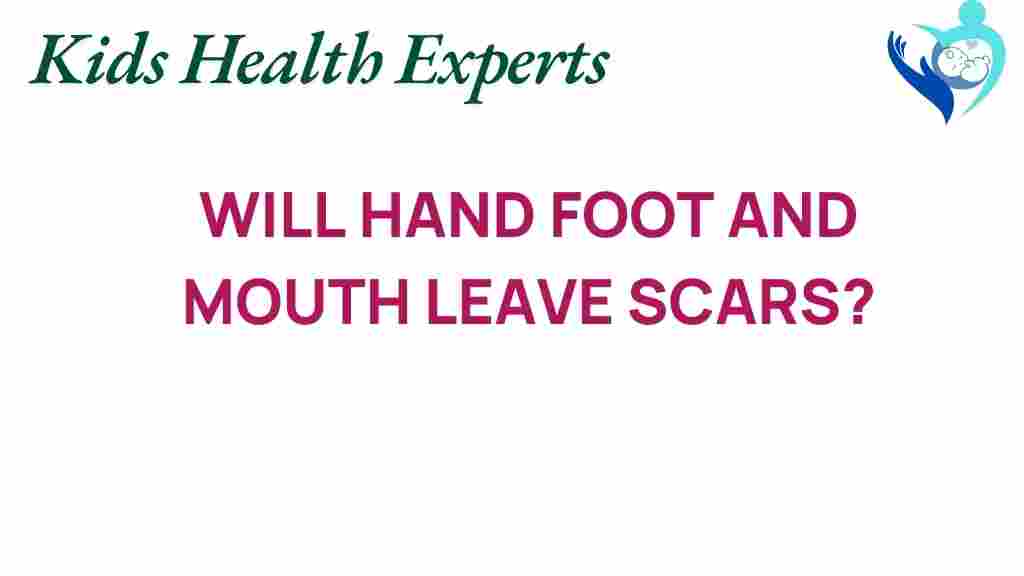Do Hand, Foot, and Mouth Disease Leave Lasting Scars?
Hand, Foot, and Mouth Disease (HFMD) is a common viral infection that primarily affects children under the age of five. It is characterized by fever, mouth sores, and a rash on the hands and feet. Parents often worry about the potential long-term effects of this illness, especially regarding the possibility of scars. In this article, we will explore the symptoms, treatment options, and recovery process associated with HFMD, and address the question: Do hand, foot, and mouth disease leave lasting scars?
Understanding Hand, Foot, and Mouth Disease
HFMD is caused by a group of viruses, most commonly the Coxsackievirus. It is highly contagious and spreads through direct contact with an infected person’s bodily fluids, such as saliva, blister fluid, or feces. The disease typically manifests in the following ways:
- Fever: Often the first symptom, lasting 1-2 days.
- Mouth sores: Painful ulcers that can make eating and drinking difficult.
- Rash: Red spots and sometimes blisters on the hands and feet, and occasionally on the buttocks and legs.
Symptoms of Hand, Foot, and Mouth Disease
The symptoms of HFMD usually appear 3-7 days after exposure to the virus. They can include:
- High fever (often the first sign)
- Painful sores in the mouth
- Skin rash on the hands, feet, or other areas
- Irritability in infants and toddlers
- Loss of appetite
While HFMD is generally mild, it can cause discomfort and concern among parents. However, the question of whether it leaves lasting scars is of particular interest.
Does Hand, Foot, and Mouth Disease Leave Scars?
Fortunately, in most cases, hand, foot, and mouth disease does not leave lasting scars. The blisters and lesions that appear during the infection typically heal without complications. Here are some key points to consider:
- Skin healing: The skin usually regenerates after the blisters burst and scab over, returning to its normal appearance.
- Risk of scarring: While rare, some individuals may experience hyperpigmentation or slight textural changes on the skin where blisters occurred, but these are not permanent scars.
- Proper care: Keeping the affected areas clean and avoiding picking at the blisters can help minimize any potential skin issues.
Treatment of Hand, Foot, and Mouth Disease
There is no specific antiviral treatment for HFMD, as it is caused by a virus and typically resolves on its own. Treatment focuses on relieving symptoms and ensuring comfort. Here are some common treatments:
- Pain relief: Over-the-counter medications such as acetaminophen or ibuprofen can help relieve fever and pain.
- Hydration: Ensuring your child stays hydrated is crucial, especially if mouth sores make drinking painful. Offer fluids like water, diluted juice, or ice pops.
- Soft foods: Encourage soft, bland foods that are easier to swallow, such as yogurt or applesauce.
- Topical treatments: Some topical oral anesthetics may provide temporary relief from mouth sores.
Recovery from Hand, Foot, and Mouth Disease
Most children recover from HFMD within 7 to 10 days without any complications. Here are some tips to ensure a smooth recovery:
- Rest: Encourage plenty of rest to help the immune system fight off the virus.
- Isolation: Keep the child at home during the contagious period to prevent spreading the infection to others.
- Monitor symptoms: Keep an eye on fever and any signs of dehydration or worsening symptoms.
Troubleshooting Tips for Parents
As a parent, you may face challenges when caring for a child with HFMD. Here are some troubleshooting tips:
- Fever management: If your child’s fever exceeds 102°F (39°C), consult your pediatrician for advice.
- Refusal to eat or drink: If your child is refusing fluids for more than a few hours, contact your healthcare provider for further evaluation.
- Signs of complications: If the rash becomes infected (e.g., increased redness, swelling, pus), seek medical attention.
Preventing Hand, Foot, and Mouth Disease
Prevention is key to minimizing the spread of HFMD. Here are some effective strategies:
- Hygiene: Teach children the importance of handwashing, especially after using the restroom and before eating.
- Avoid close contact: Keep infected children away from others until they are no longer contagious.
- Disinfect surfaces: Regularly clean and disinfect toys and surfaces that may harbor the virus.
When to Seek Medical Attention
While HFMD is usually mild, there are instances when you should consult a healthcare professional:
- If the child exhibits severe symptoms, such as a high fever lasting more than three days.
- Signs of dehydration, such as dry mouth, lack of tears, or decreased urination.
- If the child is excessively irritable or lethargic.
Conclusion
In summary, hand, foot, and mouth disease is a common viral infection that primarily affects children, and in most cases, it does not leave lasting scars. The symptoms can be uncomfortable, but with proper treatment and care, children typically recover fully without complications. Maintaining good hygiene practices can help prevent the spread of HFMD. If you have any concerns about your child’s health or recovery, do not hesitate to consult a healthcare provider.
For more information on children’s health and infections, you can visit this resource.
Additionally, if you’re looking for tips on how to manage your child’s symptoms at home, check out this helpful guide.
This article is in the category Conditions and created by KidsHealthExperts Team
